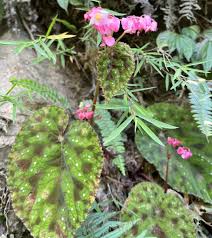Today’s Current Affairs: 28th October 2024 for UPSC IAS exams, State PSC exams, SSC CGL, State SSC, RRB, Railways, Banking Exam & IBPS, etc
Table of Contents
Cybersquatting : In News

A Delhi based developer registered the domain, ‘JioHotstar,’ which ignited a debate on cybersquatting.
- Cybersquatting is an act of registering or using a domain name to profit from a trademark, corporate or personal name of an individual.
- Usually, cybersquatting is seen as a form of extortion or even as an attempt to take over business from its rival.
- Types of Cybersquatting
- Typo squatting: These domains are bought with typological errors in the names of well-known brands. Examples of such misspelled domains are yajoo.com, facebok.com etc. The intention behind this act is to divert the target audience whenever they misspell a domain name.
- Identity theft: In cases pertaining to identity theft, the website of an already existing brand is copied with the intention of confusing the target consumer.
- Name jacking: It involves impersonating a well-known name/ celebrity in cyberspace. Instances of name jacking would include creating fake websites/ social media accounts with a celebrity’s name.
- Reverse cybersquatting: It means an event whereby a person/s falsely claims a trademark as their own and falsely accuses the domain owner of cybersquatting. In essence, this act is the opposite of cybersquatting.
- In India, there are no specific laws that condemn, prohibit or penalize the act of cybersquatting.
- However, domain names are considered as trademarks under the Trademark Act, 1999.
- Hence, any person who starts using an identical/similar domain name will be held liable for trademark infringement as described under Section 29 of the Trademark Act, 1999.
Gram Panchayat-Level Weather Forecasting initiative:

The government of India launched the Gram Panchayat-Level Weather Forecasting in Vigyan Bhawan, New Delhi.
- The initiative is developed in collaboration between the Ministry of Panchayati Raj (MoPR) and the India Meteorological Department (IMD), Ministry of Earth Sciences (MoES).
- It is aimed at “empowering rural communities and enhancing disaster preparedness at the grassroots, and will benefit farmers and villagers across the country”.
- The initiative will provide Gram Panchayats with a five-day weather forecast and hourly updates, enabling rural communities to better plan agricultural activities and prepare for weather-related risks.
- It will deliver weather updates via e-GramSwaraj, the Meri Panchayat app, and Gram Manchitra portals. e-GramSwaraj is already operational.
- Users can see data on the current temperature, wind speed, cloud cover (in percentage), rainfall, and relative humidity at the level of gram panchayats; five-day forecasts of minimum and maximum temperatures, rainfall, cloud cover, wind direction, and wind speed, and an overall weather forecast.
- It will “strengthen grassroots governance and promote sustainable agricultural practices, making rural populations more climate-resilient and better equipped to tackle environmental challenges”.
Exercise SIMBEX:

The 31st edition of the Singapore India Maritime Bilateral Exercise (SIMBEX) is scheduled from 23 to 29 Oct 2024, in the Eastern Naval Command at Visakhapatnam.
- It is an annual bilateral Naval exercisebetween the Indian Navy and the Republic of Singapore Navy (RSN).
- It has been conducted since 1994.
- SIMBEX, which began as ‘Exercise Lion King’ in 1994, has since evolved into one of the most significant bilateral maritime collaborations between the Indian Navy and the Republic of Singapore Navy (RSN).
- It holds the distinction of being the longest continuous naval exercisethat the Indian Navy has conducted with any other country.
- The exercise will be conducted in two phases: the Harbour Phase at Visakhapatnam and the Sea Phase in the Bay of Bengal.
- This year’s edition aims to further strengthen the strategic partnership between India and Singapore by enhancing interoperability, improving maritime domain awareness, and fostering cooperation to address common maritime challenges.
- The Harbour Phase will include Subject Matter Expert Exchanges (SMEEs), cross-deck visits, sports fixtures, and pre-sail briefings between personnel from both navies.
- The Sea Phase will witness advanced naval drills, including live weapon firings, anti- submarine warfare (ASW) training, anti-surface and anti-air operations, seamanship evolutions, and tactical manoeuvres.
Pink Cocaine:

According to the Drug Enforcement Administration and epidemiologists “pink cocaine,” has become a dangerous and increasingly popular part of the club scene in U.S. cities.
- Pink Cocaine does not contain any cocaine.
- Common ingredients found in pink cocaine include methamphetamine, ketamine (a dissociative anaesthetic known for its hallucinogenic effects), MDMA (ecstasy), benzodiazepines, crack, and caffeine.
- It gets its pink hue from food colouring typically including at least one stimulant and one depressant.
- This drug cocktail is also known by street names such as tusi, tuci, cocaina rosada, tucibi, pink powder etc.
- It can cause hallucinations and can impact breathing and heart attacks, high blood pressure, a heightened risk of stroke, behavioural changes, addiction, anxiety, depression, and even psychosis.
- It contains unpredictable contents that pose significant risks to users, and experts warn that some batches may be contaminated with fentanyl, a potent opioid fueling the surge in overdose deaths.
Begonia neisti:

A team of researchers recently made a significant discovery in the remote Dibang Valley of Arunachal Pradesh, uncovering a new species of flowering plant, Begonia neisti.
- Begonia neisti is a new species of flowering plant.
- It was discovered from Dibang Valley district of Arunachal Pradesh.
- The plant belongs to the begonia sect platycentrum.
- The genus Begonia is one of the largest groups in the plant kingdom, with more than 2,100 known species globally, many of which are valued for their ornamental appeal.
- The species has been named ‘begonia neisti’ to honour the North East Institute of Science and Technology (NEIST) on the successful completion of its 60 years and its immense contribution through science and technology towards the benefit of the local people of the Northeast region of India.
- Begonia neisti boasts striking variegated leaves adorned with white-silver circular spots and dark brownish-red patches near the veins.
- The large leaves and the distinctive white stripe along the stems and petioles give the plant an unusual appearance, setting it apart from other Begonia species.
- The plant thrives on moist, hilly slopes between Hunli and Anini, blooming from November to January.
- Classified as Data Deficient (DD) by the IUCN Red List, Begonia neisti’s habitat is threatened by road expansion, sparking concerns about its future.
National Mission for Manuscripts:

The Union Ministry of Culture is set to “revive and relaunch” the National Mission for Manuscripts (NMM) and is mulling the formation of an autonomous body to help preserve ancient texts in India.
- Presently, NMM is a part of the Indira Gandhi National Centre for Arts.
- The new body, likely to be named the National Manuscripts Authority, will be an autonomous entity under the Ministry of Tourism and Culture.
- National Mission for Manuscripts (NMM) was established in February 2003, by the Ministry of Tourism and Culture, Government of India.
- Mandate: Documenting, conserving and disseminating the knowledge preserved in the manuscripts.
- Motto: ‘Conserving the past for the future’
- A unique project in its programme and mandate, the NMM seeks to unearth and preserve the vast manuscript wealth of India.
- India possesses an estimate of ten million manuscripts, probably the largest collection in the world.
- These cover a variety of themes, textures, and aesthetics, scripts, languages, calligraphies, illuminations, and illustrations.
- While 75% of the existing manuscripts are in Sanskrit,25% are in regional languages, according to the NMM.
- Objectives:
- Locate manuscripts through a national-level survey and post-survey.
- Document each and every manuscript and manuscript repository, for a National Electronic Database that currently contains information on four million manuscripts making this the largest database on Indian manuscripts in the world.
- Conserve manuscripts incorporating both modern and indigenous methods of conservation and training a new generation of manuscript conservators.
- To train the next generation of scholars in various aspects of Manuscript Studies like languages, scripts and critical editing and cataloguing of texts and conservation of manuscripts.
- To promote access to manuscripts by digitizing the rarest and most endangered manuscripts.
- To promote access to manuscripts through the publication of critical editions of unpublished manuscripts and catalogues.
- To facilitate public’s engagement with manuscripts through lectures, seminars, publications and other outreach programmes
- To achieve this mandate, the mission has established more than 100 Manuscripts Resource Centres and Manuscripts Conservation Centres all over India.
Manuscript:
- A manuscript is a handwritten composition on paper, bark, cloth, metal, palm leaf, or any other material dating back at least seventy-five years that has significant scientific, historical, or aesthetic value.
Emissions Gap Report 2024:

If countries continue with their current environmental policies, it would lead to 3.1 degrees Celsius warming over pre-industrial levels, according to the recently published Emissions Gap Report 2024.
- Emissions Gap Report (EGR) is an annual report published by the United Nations Environment Programme (UNEP).
- The EGR series tracks our progress in limiting global warming well below 2°C and pursuing 1.5°C in line with the Paris Agreement.
- Since 2010, it has provided an annual science-based assessment of the gap between estimated future global greenhouse gas (GHG) emissions if countries implement their climate mitigation pledges and where they should be to avoid the worst impacts of climate change.
- Each year, the report also highlights key opportunities to bridge the emissions gap, tackling a specific issue of interest.
- With the aim to inform the climate negotiations among UN Member States, the EGR is launched every year ahead of the UN Climate Change Conference of the Parties (COP).
Highlights of 2024 EGR:
- The report, titled “No More Hot Air… Please!”, underscores that if countries fail to collectively cut annual GHG emissions by 42 percent by 2030 and by 57 percent by 2035, the Paris Agreement’s 1.5°C global temperature target will become unattainable within a few years.
- For the 2°C target, reductions of 28 percent by 2030 and 37 percent by 2035 are required.
- Without a significant enhancement in Nationally Determined Contributions (NDCs) targets, the UNEP warns global temperatures could rise by 2.6-3.1°C by the century’s end.
- NDCs are national climate action plans updated every five years by countries to align with the Paris Agreement, which seeks to limit global temperature rise to well below 2°C, ideally to 1.5°C.
- GHG emissions increased by 1.3 percent in 2023 relative to 2022, with the power sector being the largest contributor, followed by transport, agriculture, and industry.
- Among major economies, India in FY23 recorded the steepest increase in GHG emission, climbing 6.1 percent, with China trailing close behind at 5.2 percent.
- In contrast, GHG emission decreased in both the European Union (EU) and the United States (US) by 7.5 percent and 1.4 percent, respectively.
- Despite India’s rise, its 2023 GHG emission remains relatively low at 4,140 million metric tons of carbon dioxide equivalent (MtCO₂e) against China’s 16,000 and the US’s 5,970.
- The EU’s emission was slightly lower than India’s, at 3,230 MtCO₂e.
- India is the third largest emitter globally, behind China and the United States.
- The six largest GHG emitters accounted for 63% of global GHG emissions. By contrast, least developed countries accounted for only 3%.
Kadar Tribe:

The Kadar tribe of Vazhachal, Kerala, has taken on active restoration of natural forests degraded by invasive alien species.
- The Kadars are an indigenous community residing primarily in the southern parts of India.
- They are predominantly found in the forests of Kerala and Tamil Nadu.
- The Kadar tribe is classified as a particularly vulnerable tribal group (PVTG) by the Government of India.
- Their name, “Kadar,” is derived from the word “kaadu,” which means forest in Tamil and Malayalam, reflecting their deep connection with the forest environment.
- They speak a Dravidian language known as Kadar or Kadars, which is influenced by Tamil and Malayalam.
- They are traditionally a nomadic group, known for their hunter-gatherer lifestyle.
- They have a profound knowledge of the forest and its resources, relying on gathering honey, fruits, tubers, and medicinal plants for their sustenance.
- Hunting, though less prevalent today, was also a significant part of their livelihood.
- In recent years, some Kadars have taken up small-scale agriculture and wage labor, but they continue to depend heavily on forest produce for their livelihood.
- They are known for their traditional medicinal knowledge, particularly in the use of herbs and plants for healing.
- Kadar have a symbiotic relationship with nature, and they believe in the coexistence of Kadar and Kaadu (forest).
- The Kadar have traditional protocols to ensure the sustainable use of forest resources.
- Every practice of resource collection—be it honey, firewood, resin, or herbs—is designed to allow time for regeneration.
- The Kadar community follows a simple social structure, typically organized around extended families.
- They live in small settlements called “hamlets” or “oorus,” usually comprising a few huts made of bamboo, leaves, and other forest materials.
- Their population was estimated at approximately 2,000 individuals in the early 21st century.
- They worship jungle spiritsand their own kindly creator couple, as well as local forms of the Hindu deities.
Srijan – Center For Generative AI:

IndiaAI and Meta have launched a Center for Generative AI, called Srijan, at IIT Jodhpur, with the goal of driving open-source AI innovations in India.
- This initiative, supported by a partnership with the All India Council for Technical Education (AICTE), aims to encourage young developers to leverage open-source AI models to solve real-world challenges.
- Srijan seeks to empower young AI talent by providing resources to work with Large Language Models (LLMs) and focus on essential areas like healthcare, mobility, and education.
- Meta has committed INR 750 Lakhs over three years, supporting training, research, and workshops.
- The center will host Hackathons, Master Training workshops, and a GenAI Resource Hub to foster collaboration and skill development.
- IIT Jodhpur collaborates with national and international stakeholders, including Meta, MeitY, AICTE, and academic institutions, to expand Generative AI research and innovation.
- YuvaAI (Youth for Unnati and Vikas with AI) initiative aims to skill 1 lakh young developers (ages 18-30) in generative AI to tackle real-world challenges.
- A joint effort by Meta, MeitY and AICTE to enhance AI talent through open-source Large Language Models (LLMs) training.
- Offers skilling programs, LLM workshops, and hackathons. Outstanding projects receive mentoring, seed funding, and support.
- Targets sectors like healthcare, education, agriculture, and smart cities, aligning with national goals for sustainable development.
AICTE (All India Council for Technical Education):
- Establishment: Formed in November 1945, AICTE became a statutory body in 1987 under the AICTE Act.
- Purpose: AICTE supports coordinated development and improvement in technical education across India.
ISRO-DBT Agreement:

The Indian Space Research Organisation (ISRO) and the Department of Biotechnology (DBT) have joined forces to develop bio-experiments for the Bharatiya Antariksh Station (BAS), India’s planned indigenous space station.
ISRO-DBT agreement highlights:
- Purpose is to design biological experiments for BAS and the Gaganyaan mission.
- Areas of Research: Impact of weightlessness on muscle health.
- Algae studies for nutrient-rich, long-lasting food sources and biofuel production.
- Effects of space radiation on astronaut health.
- BioE3 (Biotechnology for Economy, Environment and Employment) initiative: Aligns with DBT’s policy to promote bio-manufacturing in India, focusing on health, bio-pharma, regenerative medicine, and biotechnology for waste management.




